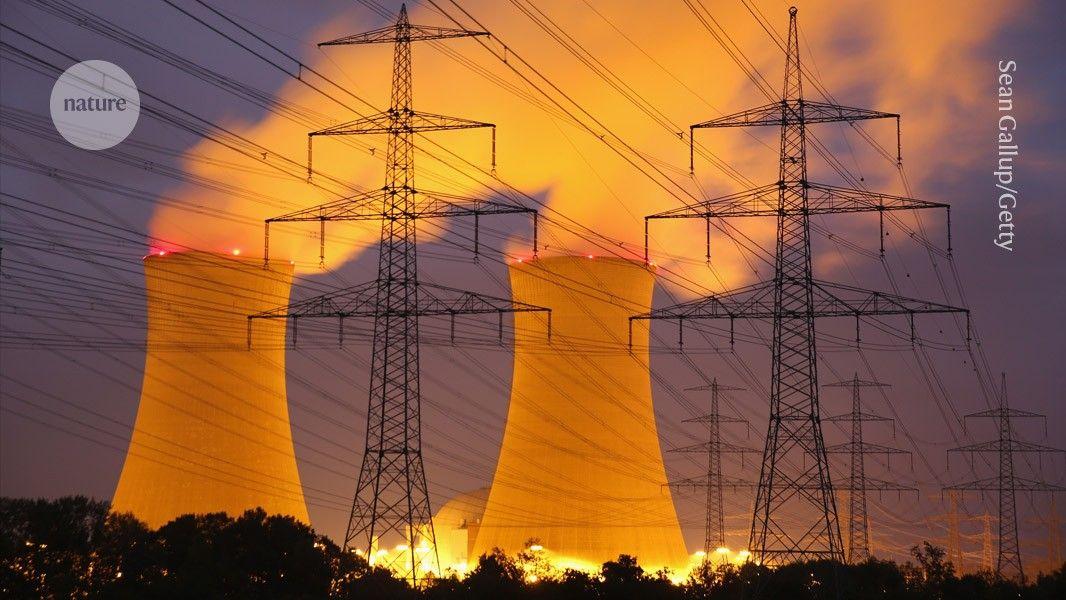AI Chip Production Drives Surge in Global Emissions, Raising Environmental Concerns
4 Sources
4 Sources
[1]
AI Chipmaking Emissions Surged Fourfold in 2024, Greenpeace Says
Emissions generated from the production of semiconductors that underpin AI services grew more than fourfold in 2024, according to a Greenpeace analysis of company and publicly available data. Nvidia Corp. and Microsoft Corp. rely on chipmakers like Taiwan Semiconductor Manufacturing Co., SK Hynix Inc., Samsung Electronics Co. and Micron Technology Inc. for the graphic processing units and memory that support artificial intelligence. Much of their manufacturing occurs in Taiwan, South Korea and Japan, where power grids remain deeply reliant on fossil fuels.
[2]
Global emissions due to AI-related chipmaking grew more than four times in 2024
A pair of studies analyzing the effects of AI on our planet have been released and the news is fairly grim. Greenpeace generated from the production of the semiconductors used in AI chips and found that there was a fourfold increase in 2024. This analysis was completed using publicly available data. Many of the big chipmakers like NVIDIA rely on companies like Taiwan Semiconductor Manufacturing Co and SK Hynix Inc. for the components of GPUs and memory units. Most of this manufacturing happens in Taiwan, South Korea and Japan, where power grids are primarily reliant on fossil fuels. This accounts for some of the increase in global emissions. The organization also says that global electricity requirements for AI could experience a 170-fold increase by 2030. Greenpeace's estimates have led some to worry that the AI race could derail global decarbonization goals, . The nonprofit recommends that governments in eastern Asia transition to renewable power for chip manufacturing, but the opposite seems to be happening. South Korea to of gas-fired power generation. Taiwan has used the increased power demand related to AI as an excuse to expand liquid natural gas projects and grid infrastructure. Another study by The International Energy Agency (IEA) . The analysis suggested that power consumption by AI-adjacent data centers could account for half of the growth in electricity demand by 2030. As a matter of fact, the US economy could be on track to consume more electricity for processing data than for manufacturing all energy-intensive goods combined. This includes aluminum, steel, cement and chemicals. Electricity demand from global data centers could more than double by 2030 to around 945 terawatt-hours (TWh). That's more than the . It's a whopping 30 times more than the . Proponents of AI say that the massive energy needs will eventually abate as the technology leads to scientific discoveries that accelerate innovation in fields like and . However, that's a big fat maybe.
[3]
Soaring demand for AI chips fuels power usage: Report
Growing demand for the semiconductor chips that power artificial intelligence is driving soaring electricity use, particularly in countries that rely on fossil fuels for power, environmental group Greenpeace warned Thursday. Global chip manufacturing is concentrated in East Asia, including Taiwan, South Korea, and Japan, whose power systems are still heavily dependent on burning fossil fuels that produce climate-warming emissions. Exploding demand for the highly advanced chips used in energy-hungry AI data centers around the world has raised fears about the technology's environmental impact. AI chipmaking used nearly 984 gigawatt hours (GWh) last year, up more than 350% from 2023, Greenpeace said. Emissions from that electricity generation rose more than four-fold to 453,600 metric tons of carbon dioxide equivalent in 2024, from 99,200 in the previous year. "Chip manufacturing is extremely energy intensive. A large foundry can consume up to 100 megawatt-hours of electricity per hour," Greenpeace said. The group warned that global electricity demand for AI chipmaking was expected to reach 37,238 GWh by 2030, adding that was "more than the total current electricity consumption of Ireland." Tech companies were spending billions of dollars in AI research and infrastructure, but "the adoption of strategies to achieve 100% renewable energy across supply chains remains limited," Greenpeace said. Increasing demand for chips and expanding manufacturing capacity would "inevitably contribute to a growing carbon footprint," it warned. "Tech companies such as Nvidia, Microsoft, Meta, and Google must support their suppliers to increase renewable energy procurement and should target 100% renewable energy across their supply chains by 2030," the report said. While chipmakers, including Taiwan Semiconductor Manufacturing Co (TSMC), have been transitioning to renewable energy, the pace was "slow," Greenpeace said. TSMC told Bloomberg News that the company was committed to low-carbon manufacturing and that its internal tally showed emissions per unit declined in 2024.
[4]
Soaring demand for AI chips fuels power usage: report - VnExpress International
Growing demand for the semiconductor chips that power artificial intelligence is driving soaring electricity use, particularly in economies that rely on fossil fuels for power, environmental group Greenpeace warned Thursday. Global chip manufacturing is concentrated in East Asia, including Taiwan, South Korea and Japan, whose power systems are still heavily dependent on burning fossil fuels that produce climate-warming emissions. Exploding demand for the highly advanced chips used in energy-hungry AI data centres around the world has raised fears about the technology's environmental impact. AI chipmaking used nearly 984 gigawatt hours (GWh) last year, up more than 350 percent from 2023, Greenpeace said. Emissions from that electricity generation rose more than fourfold to 453,600 metric tons of carbon dioxide equivalent in 2024, from 99,200 in the previous year. "Chip manufacturing is extremely energy-intensive. A large foundry can consume up to 100 megawatt-hours of electricity per hour," Greenpeace said. The group warned that global electricity demand for AI chipmaking was expected to reach 37,238 GWh by 2030, adding that was "more than the total current electricity consumption of Ireland". Tech companies were spending billions of dollars in AI research and infrastructure, but "the adoption of strategies to achieve 100 percent renewable energy across supply chains remains limited", Greenpeace said. Increasing demand for chips and expanding manufacturing capacity would "inevitably contribute to a growing carbon footprint", it warned. "Tech companies such as Nvidia, Microsoft, Meta, and Google must support their suppliers to increase renewable energy procurement and should target 100 percent renewable energy across their supply chains by 2030," the report said. While chipmakers, including Taiwan Semiconductor Manufacturing Co (TSMC), have been transitioning to renewable energy, the pace was "slow", Greenpeace said. TSMC told Bloomberg News that the company was committed to low-carbon manufacturing and that its internal tally showed emissions per unit declined in 2024.
Share
Share
Copy Link
A Greenpeace report reveals a fourfold increase in emissions from AI chipmaking in 2024, highlighting the environmental impact of the AI boom and the urgent need for renewable energy adoption in the tech industry.

AI Chip Production Drives Massive Increase in Emissions
A recent Greenpeace analysis has revealed a startling increase in emissions related to AI chip production, raising concerns about the environmental impact of the rapidly growing artificial intelligence industry. According to the report, emissions from AI chipmaking surged more than fourfold in 2024, highlighting the urgent need for sustainable practices in the tech sector
1
2
.Staggering Growth in Energy Consumption
The Greenpeace study found that AI chipmaking consumed nearly 984 gigawatt hours (GWh) of electricity in 2024, marking a dramatic increase of over 350% from the previous year
3
. This surge in energy consumption led to a corresponding rise in emissions, with carbon dioxide equivalent emissions jumping from 99,200 metric tons in 2023 to 453,600 metric tons in 20244
.Geographical Concentration and Fossil Fuel Dependence
A significant factor contributing to this environmental impact is the geographical concentration of chip manufacturing. Major production hubs are located in East Asian countries such as Taiwan, South Korea, and Japan, where power grids remain heavily reliant on fossil fuels
1
3
. This dependence on non-renewable energy sources amplifies the carbon footprint of AI chip production.Future Projections and Concerns
The report paints a concerning picture for the future, projecting that global electricity demand for AI chipmaking could reach a staggering 37,238 GWh by 2030 – surpassing the current total electricity consumption of Ireland
3
. This projection has led to fears that the AI race could potentially derail global decarbonization goals2
.Impact on Data Centers and Overall Energy Consumption
The International Energy Agency (IEA) has also weighed in on the issue, suggesting that power consumption by AI-adjacent data centers could account for half of the growth in electricity demand by 2030. The agency predicts that electricity demand from global data centers could more than double to around 945 terawatt-hours (TWh) by 2030, exceeding the current electricity consumption of Japan
2
.Related Stories
Call for Renewable Energy Adoption
Greenpeace emphasizes the need for tech giants like Nvidia, Microsoft, Meta, and Google to support their suppliers in increasing renewable energy procurement. The organization recommends targeting 100% renewable energy across supply chains by 2030
3
4
. While some chipmakers, such as Taiwan Semiconductor Manufacturing Co (TSMC), have begun transitioning to renewable energy, Greenpeace notes that the pace of this transition remains slow4
.Industry Response and Future Outlook
TSMC has responded to the report, stating its commitment to low-carbon manufacturing and claiming that its internal data shows a decline in emissions per unit in 2024
1
4
. However, the overall trend of increasing energy consumption and emissions in the AI chip industry remains a significant concern.As the demand for AI technologies continues to grow, balancing technological advancement with environmental responsibility will be crucial. The tech industry faces the challenge of innovating sustainably, potentially leveraging AI itself to discover solutions for more efficient and eco-friendly chip production and energy use
2
.References
Summarized by
Navi
[3]
Related Stories
Recent Highlights
1
OpenAI releases GPT-5.2 AI model after code red memo targets Google's Gemini 3 threat
Technology

2
Disney invests $1 billion in OpenAI, licenses 200+ characters for Sora AI video generator
Technology

3
OpenAI faces wrongful death lawsuit after ChatGPT allegedly fueled murder-suicide tragedy
Policy and Regulation








